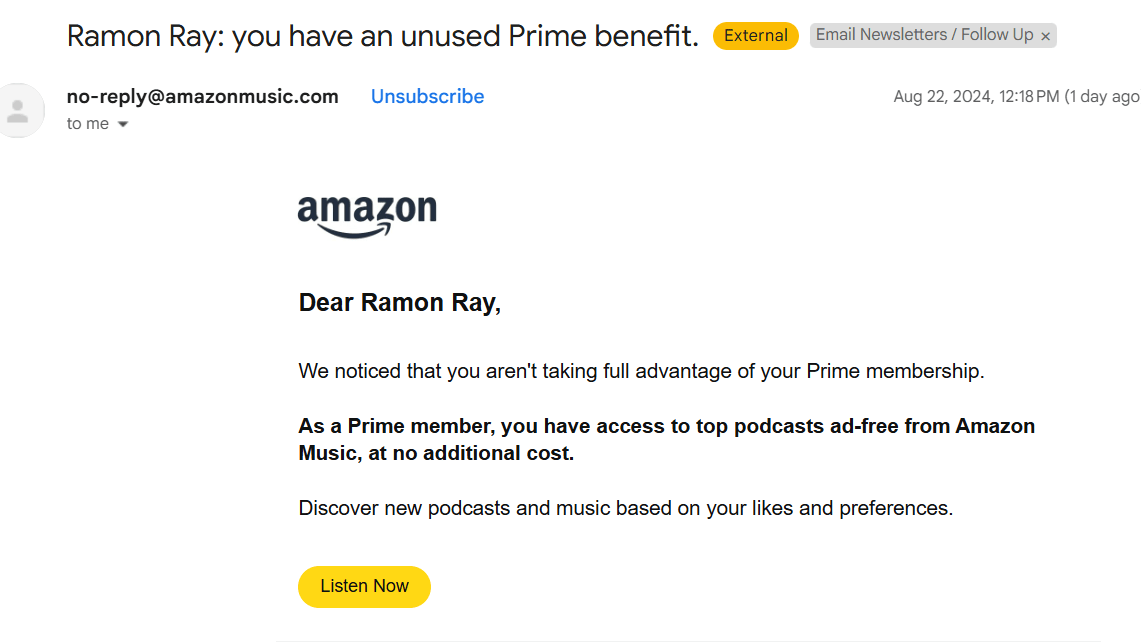I recently got an email from Amazon Prime, letting me know that I’m not using a Prime benefit. They emailed me to let me know that I’m not using Amazon Music. They know that the more I’m using Amazon and getting benefits from Prime, the more I’ll want to stay with Amazon. What about your customers? Your customers are paying you but are they getting as much as they can from your service?
Engagement Drives Revenue
Companies often focus on acquiring new customers, but overlook a crucial factor: customer utilization. How much customers actually use a product directly impacts long-term success. Higher usage rates lead to increased engagement, brand loyalty, and ultimately, revenue. When customers frequently interact with a product, they’re more likely to discover its full value, recommend it to others, and continue their subscription or make repeat purchases. This consistent engagement creates a positive feedback loop, where satisfied customers become brand advocates, driving organic growth and reducing marketing costs.
The Pitfalls of Low Utilization
When customers rarely use a product they’ve paid for, it spells trouble. Low utilization rates often indicate a misalignment between customer needs and product features. This disconnect can stem from inadequate market research, poor product positioning, or a failure to evolve with changing customer demands. Additionally, low usage may point to poor onboarding processes or a confusing user experience, preventing customers from realizing the product’s full potential. Perhaps most critically, it can signify a lack of perceived value – customers simply don’t see how the product meaningfully improves their lives or solves their problems.
These issues can result in a cascade of negative outcomes. Customer satisfaction plummets as users feel they’ve wasted money on an unused product. This dissatisfaction leads to higher churn rates, as customers cancel subscriptions or switch to competitors. Moreover, in today’s interconnected world, unhappy customers can quickly spread negative word-of-mouth through social media and review platforms, damaging the brand’s reputation and hindering new customer acquisition.
Maximizing User Engagement
To boost utilization, companies should implement a multi-faceted approach. Start by streamlining onboarding processes to ensure new users can quickly grasp the product’s core features and benefits. This might involve interactive tutorials, personalized onboarding flows, or even one-on-one sessions for high-value customers.
Regular communication plays a vital role in keeping users engaged. Implement a strategic communication plan that highlights product updates, new features, and innovative use cases. These touchpoints remind users of the product’s value and encourage them to log in and explore.
Personalization can significantly impact utilization rates. Use data analytics to understand individual user behavior and preferences, then offer tailored tips and recommendations. This personalized approach helps users discover features relevant to their specific needs, increasing the likelihood of regular use.
Consider implementing gamification elements to make product usage more engaging and rewarding. This could include progress tracking, achievement badges, or even friendly competition among users. By tapping into psychological motivators, gamification can transform product usage from a chore into an enjoyable experience.
The Hidden Danger of Inactive Paid Users
Counterintuitively, customers who pay for a product but don’t use it pose a significant risk to long-term business health. While these users contribute to short-term revenue, they represent a ticking time bomb for customer retention. Inactive users are far more likely to cancel their subscriptions once they realize they’re paying for something they don’t use, leading to higher churn rates and unstable revenue.
Moreover, inactive users deprive the company of valuable feedback and usage data. Active users naturally encounter bugs, suggest improvements, and highlight desired features – all crucial inputs for product development. Without this feedback loop, the product may stagnate or evolve in ways that don’t align with real user needs.
Perhaps most importantly, inactive users miss out on the full value of the product, leading to a sense of dissatisfaction or even resentment. This negative sentiment can spill over into public forums, potentially deterring new customers and tarnishing the brand’s reputation.
Measuring and Improving Utilization
To effectively address utilization issues, companies must first establish robust tracking mechanisms. Key metrics to monitor include daily and monthly active users, which provide a snapshot of how many customers engage with the product regularly. Time spent in the product offers insights into the depth of engagement – are users merely logging in, or are they deriving significant value?
Feature adoption rates help identify which aspects of the product resonate with users and which might need improvement or better promotion. Customer support interactions can also be telling; a high volume of basic questions might indicate onboarding issues, while more advanced queries could signal deeper engagement.
Use these insights to refine the product, enhance the user experience, and develop targeted engagement campaigns. For instance, if data shows that users who adopt a particular feature have higher retention rates, consider prominently featuring it in the onboarding process or running a dedicated campaign to boost its adoption.
Regular user surveys and feedback sessions can complement quantitative data, providing nuanced insights into user motivations, pain points, and desires. This qualitative information can guide product development priorities and help craft more effective marketing messages.
Conclusion
Customer utilization directly impacts a company’s bottom line, serving as a critical indicator of product-market fit and long-term viability. By prioritizing user engagement and product adoption, businesses can foster stronger customer relationships, reduce churn, and drive sustainable growth.
Remember: a paying customer who doesn’t use your product is not just a missed opportunity for long-term success – it’s a vulnerability in your business model. Successful companies don’t just sell products; they create indispensable tools that become integral to their customers’ lives or workflows. By focusing on utilization, you’re not just boosting metrics – you’re building a foundation for lasting success in an increasingly competitive marketplace.
Related articles:
Amazon Prime Video Is Teaching Entrepreneurs about Profit










